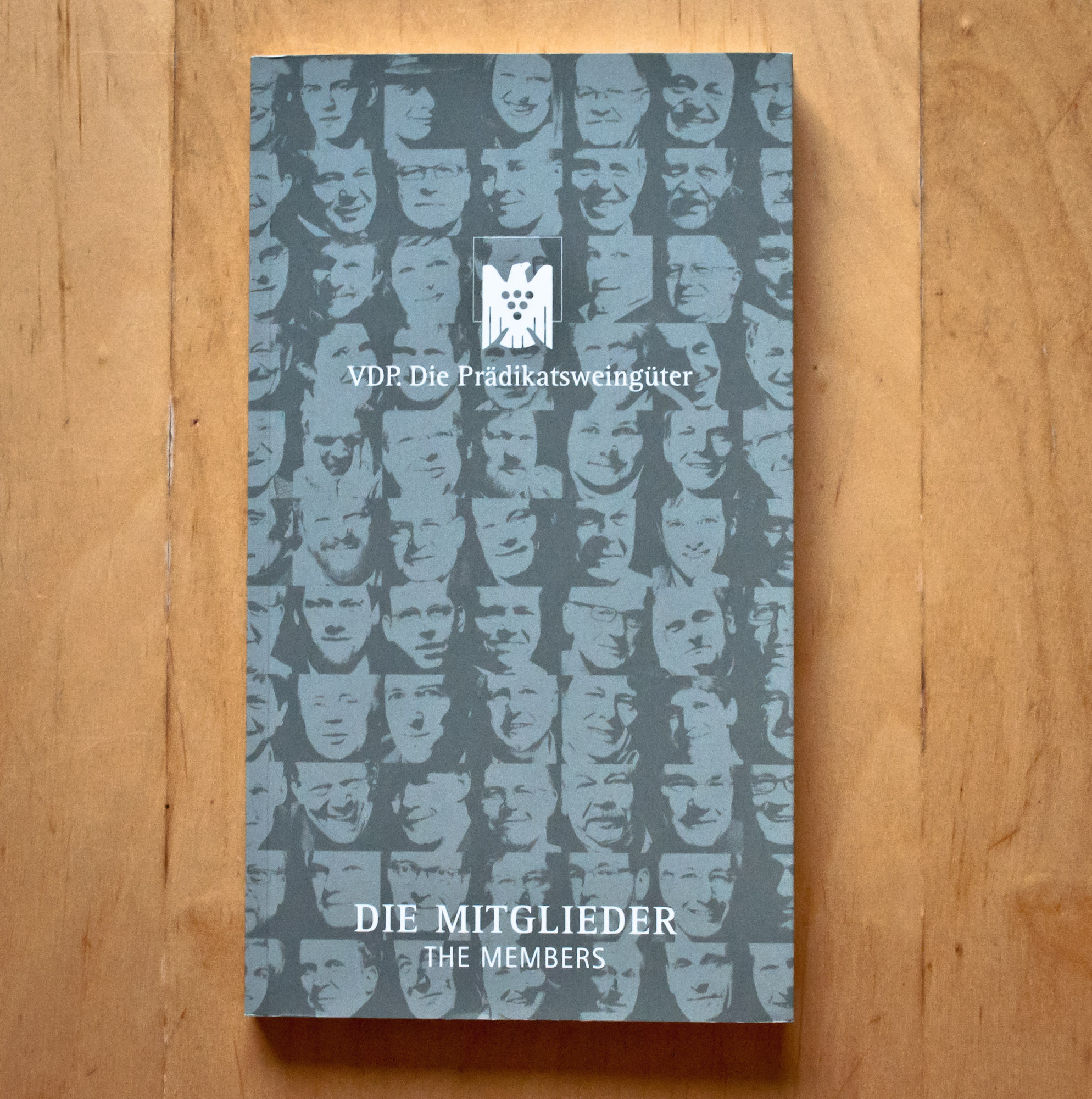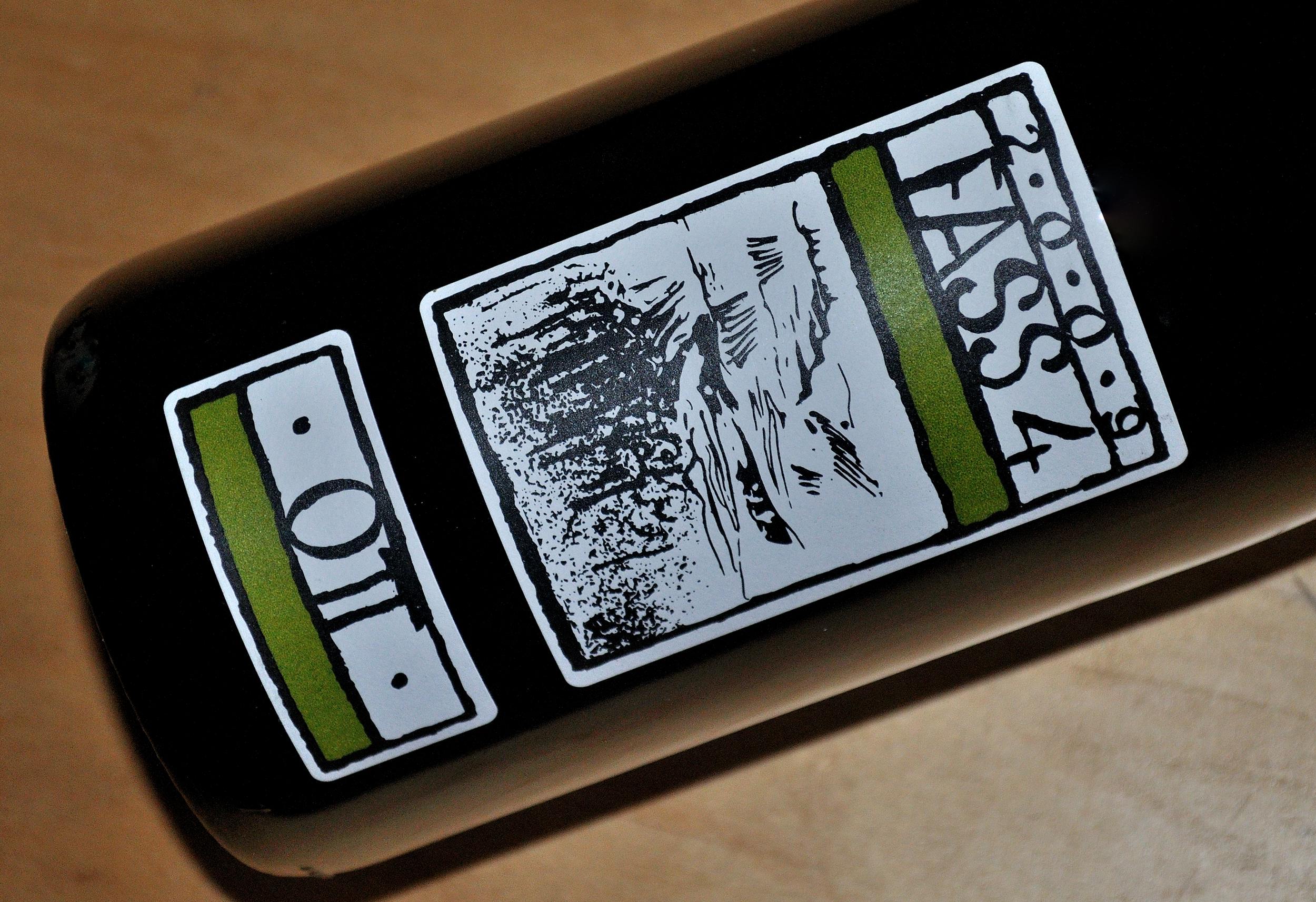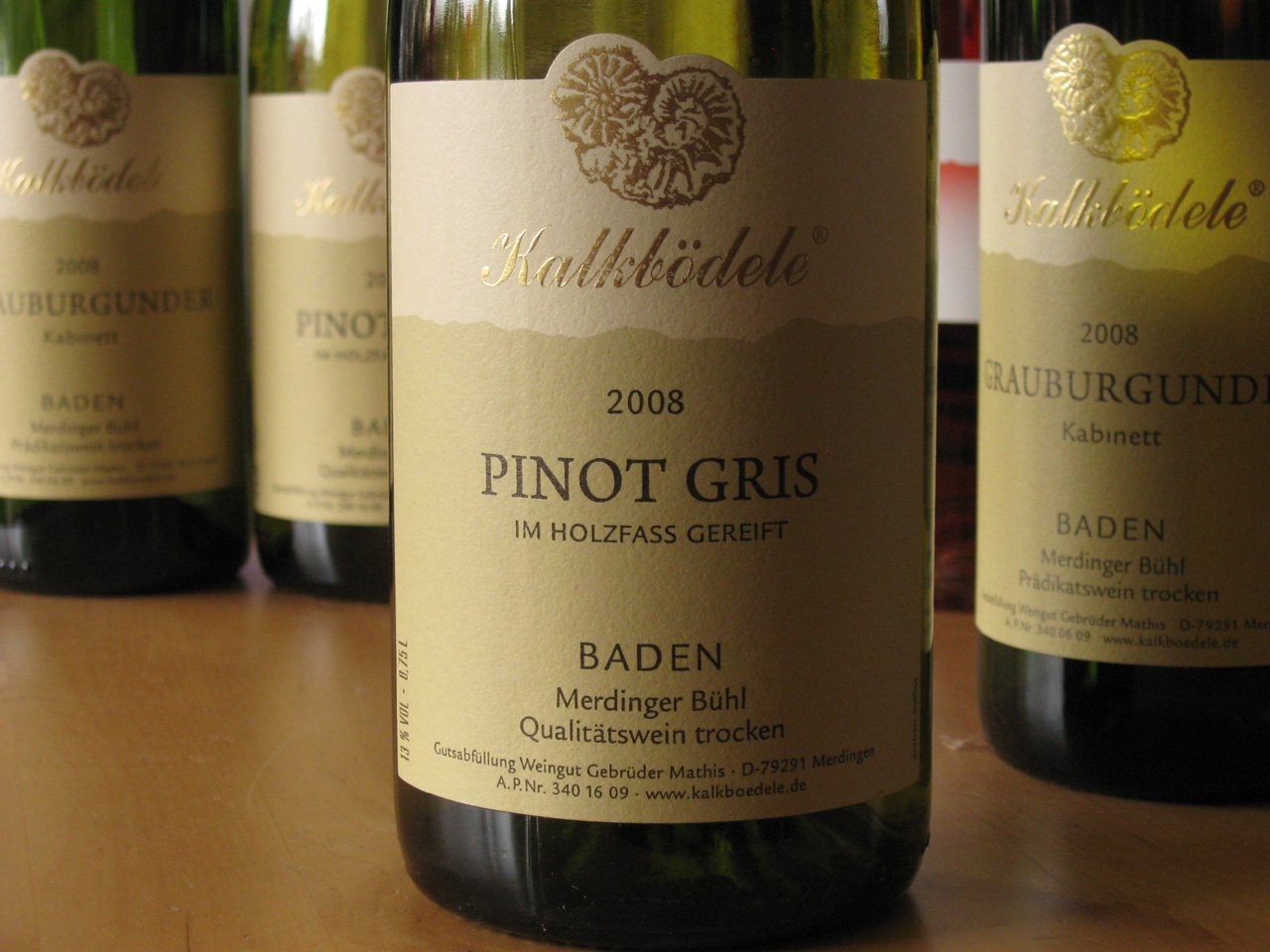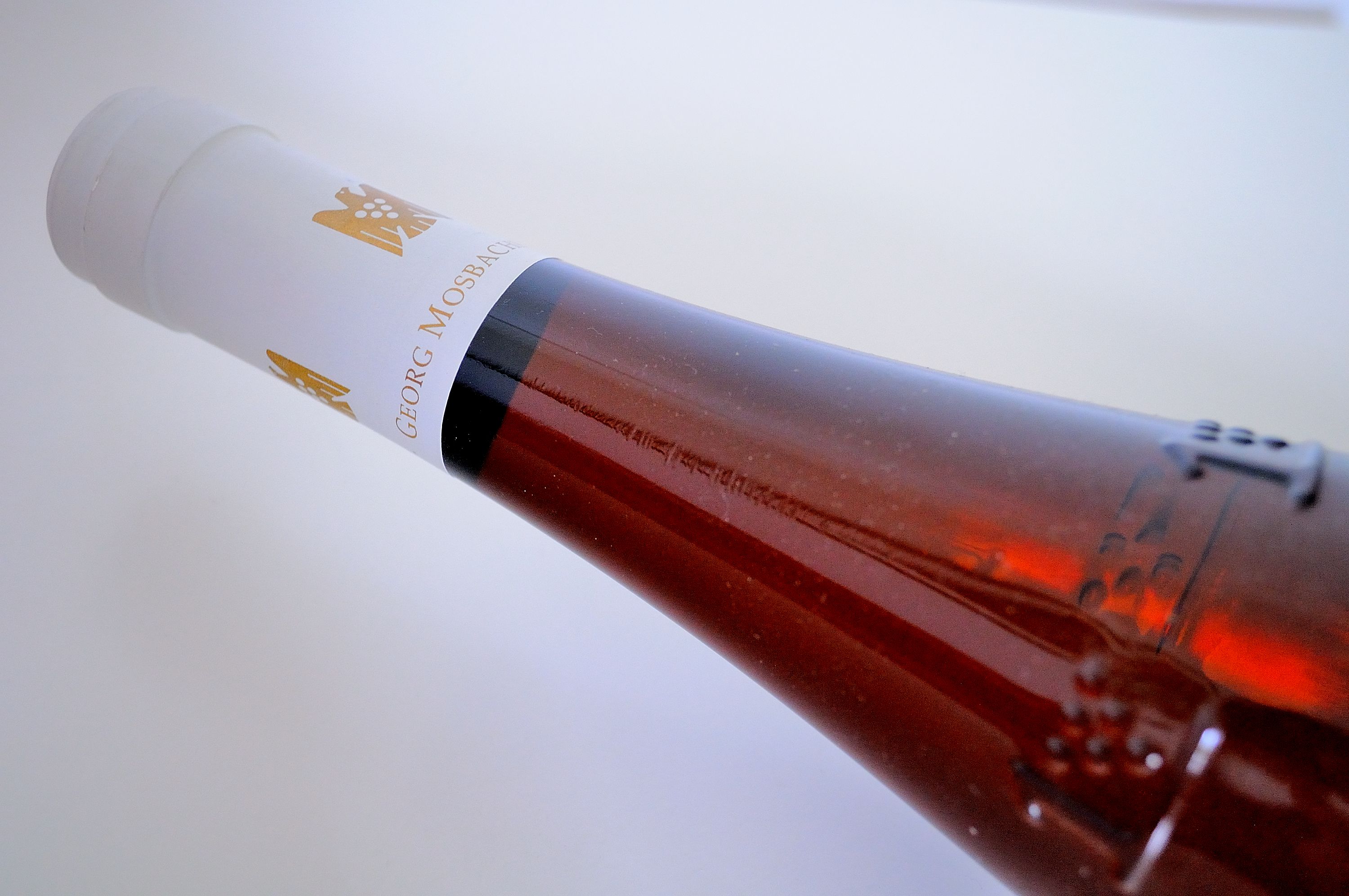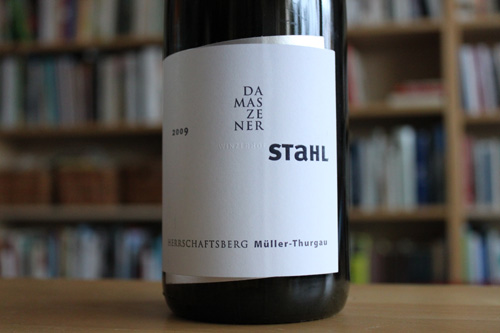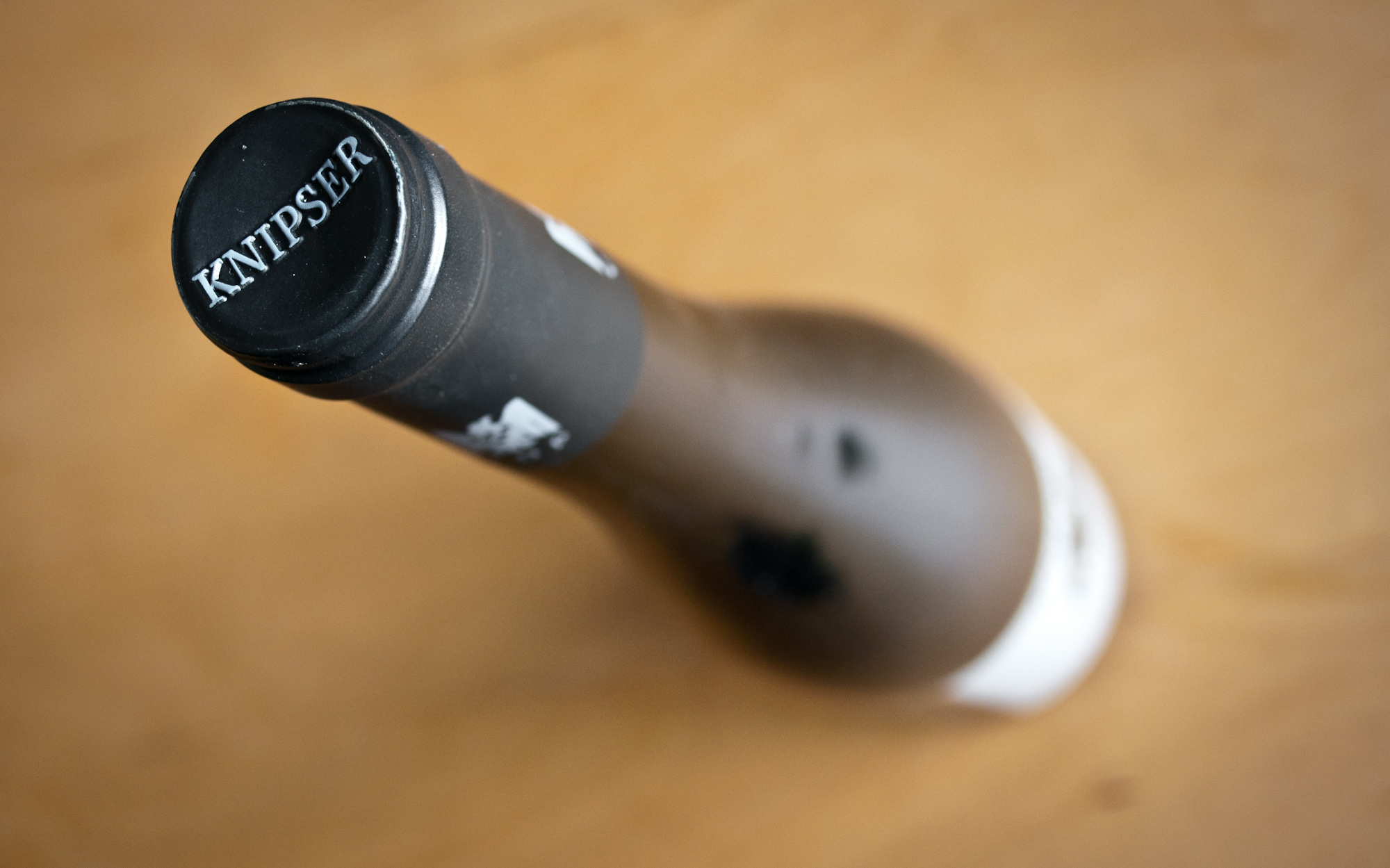Dr. Heger, Weißburgunder Auslese trocken, Ihringer Winklerberg, 2002
As far as aged wines go, eight years may not seem seriously old, but Pinot Blanc, especially from Germany, tends to be drunk as a younger wine, light and fresh in style. Having said that, some German wineries also produce more substantial Weißburgunder (German for Pinot Blanc), matured in oak barrels, that can and should age a few years. Dr. Heger is one of those wineries, located in the Kaiserstuhl, the warmest wine growing area in Germany with fantastic volcanic soil.
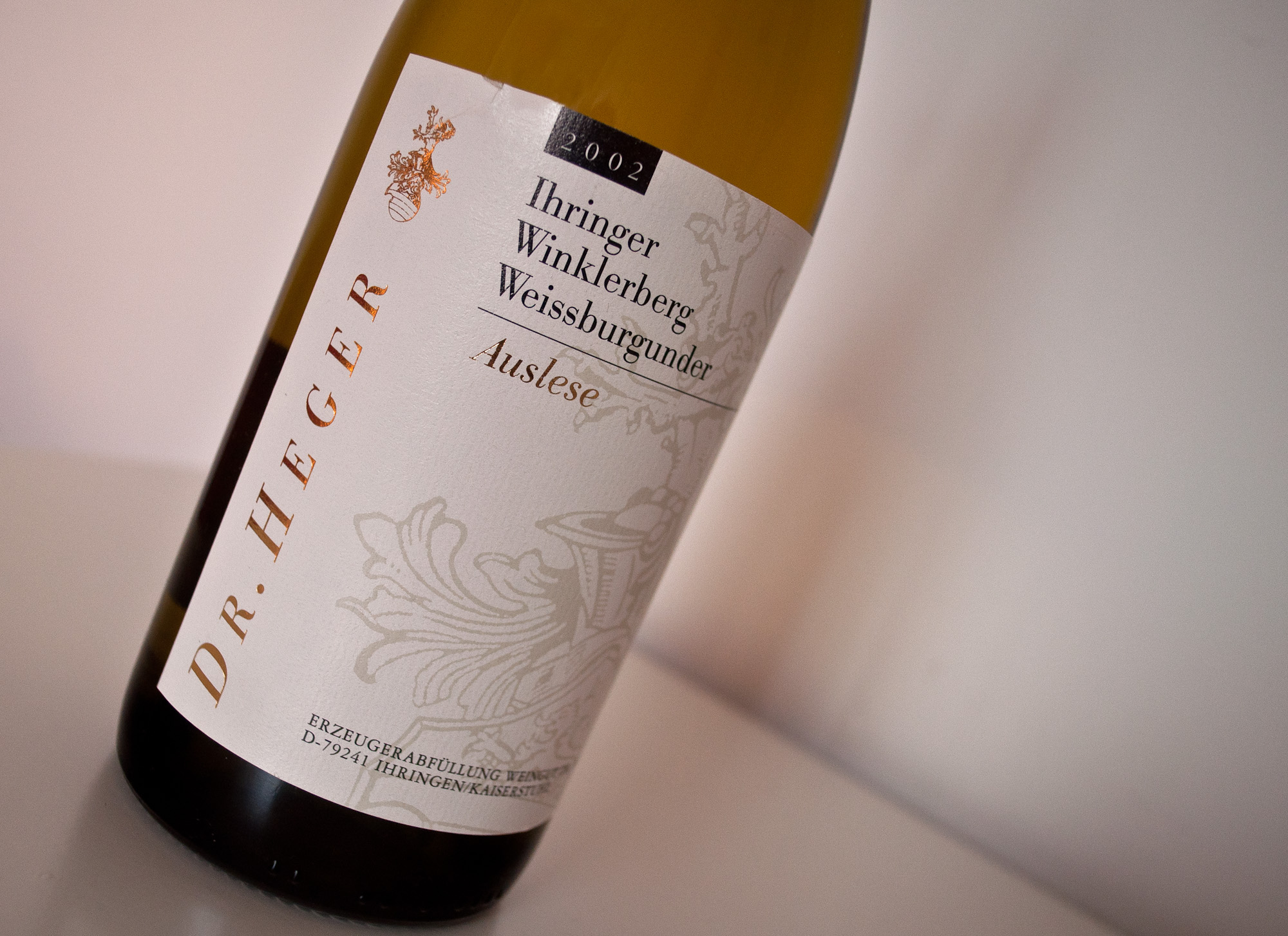
The dry Auslese from the Winklerberg vineyard is one of those more substantial Pinot Blancs. The colour shows the wine's age, an intense honey coloured gold that promises substance and maturity.



